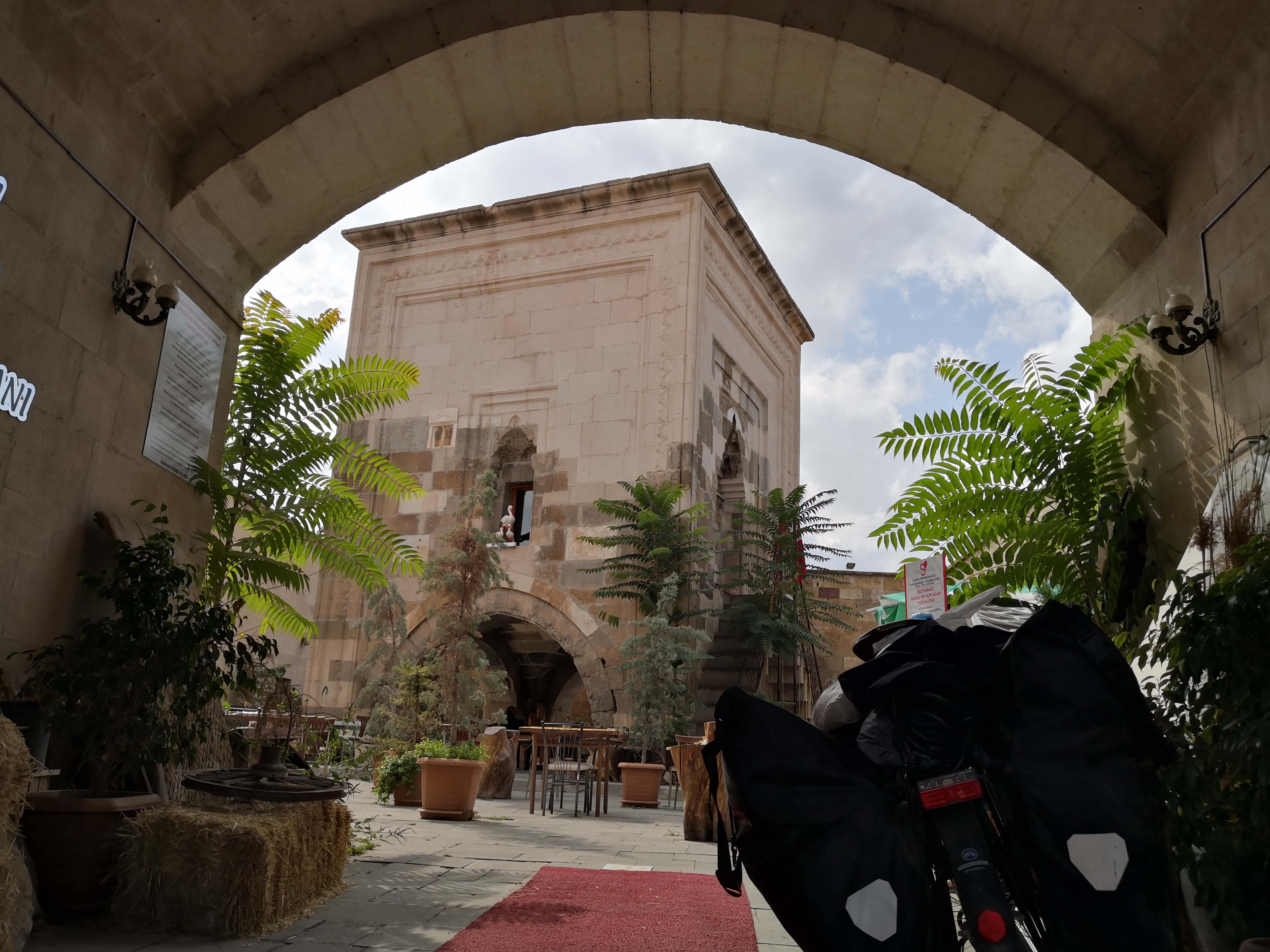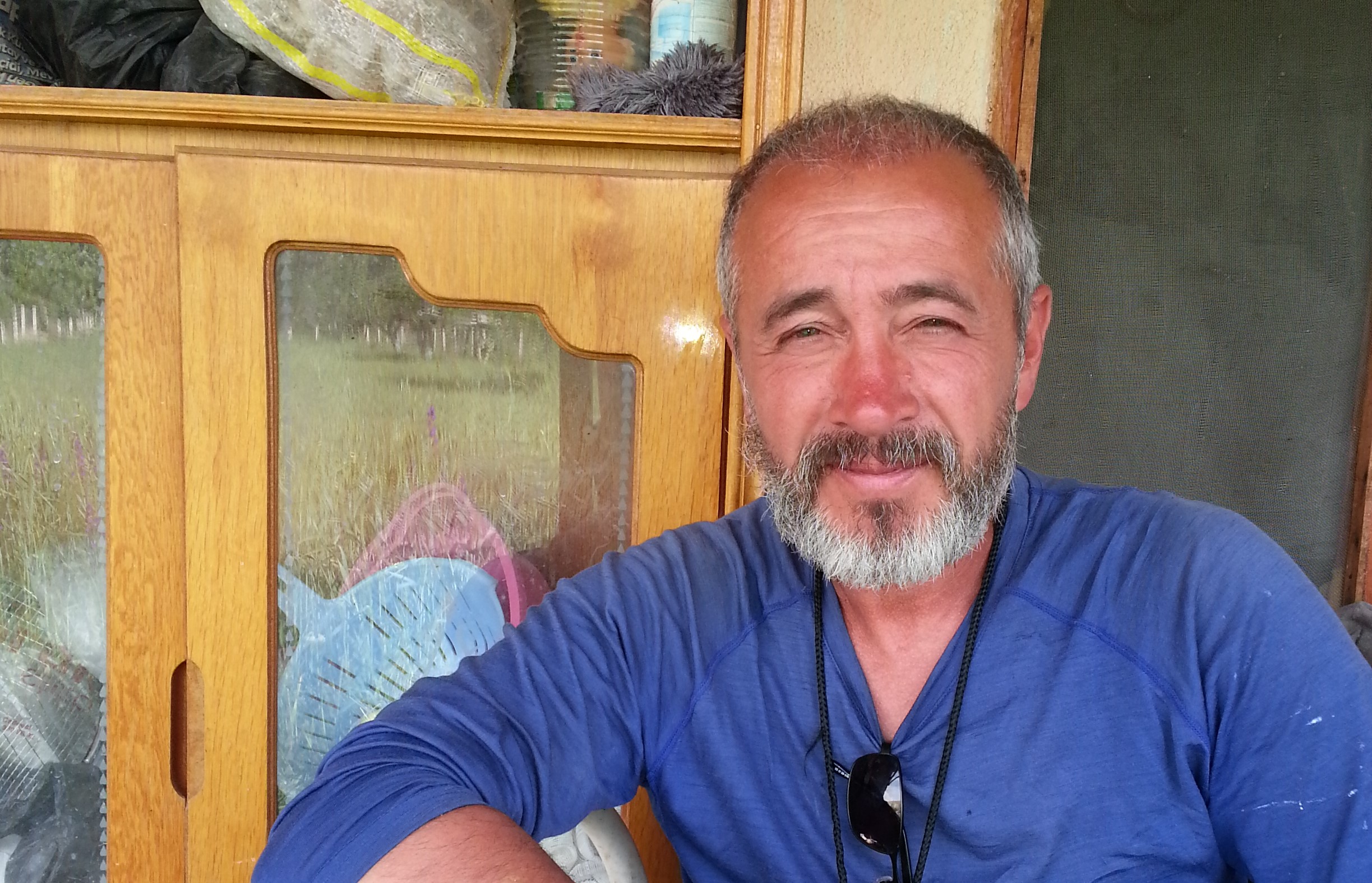Anatolia through the eyes of a pilgrim

Where did you get the inspiration for the Sufi Trail?
Sedat Cakir: In May 2006, I decided to walk the Camino de Santiago in Spain in the spirit of Rumi, whose vision of bringing people together had inspired me for some time. Before I set off, I met the bishop of Haarlem, my home town in the Netherlands. The bishop gave me a letter for the bishop of Santiago, which I delivered along with a copy of the Koran in Spanish.
After walking the pilgrimage trail, I came up with the idea of reviving the old route to Mecca that foot pilgrims used to walk. But the bigger the idea became, the more difficult it seemed. That's why we decided to break the route up into chunks. In 2009, I hiked from the Netherlands to Turkey. The rest is history: we developed the first leg of the Mecca way and called it the "Sultan's Trail". The Sultan's Trail is an international hiking route from Vienna to Istanbul. Then, five years ago, we launched the Sufi Trail from Istanbul to Konya.
Can you sum up in a few words what the Sufi Trail is all about?
Cakir: The Sufi Trail is all about sharing your hearts with each other; experiencing the feeling of coming to a home which is unknown to you, but soon seems familiar. You sense that people who live along the trail have already been expecting you. However, you shouldn't be in a hurry, otherwise you miss a lot. Just having tea with someone for a few minutes might be enough to exchange some life lessons. While hiking, you give those spontaneous conversations time to ripen and integrate them into yourself. That's what makes pilgrimage so unique. The name "Sufi Trail" occurred to us mainly because the path ends in Konya, the city of Rumi.

How did you go about creating the Sufi Trail route?
Cakir: When researching the Mecca route – which the Sufi Trail is part of – we drew on many historical sources. In the Ottoman times, pilgrims and merchants used to rest at caravanserais. At such inns, messengers would change their horses and travellers renew their provisions. While creating the stages of the trail we focused on the location of these historical guesthouses. We didn't develop the route from scratch. We are just reviving it. In the next stage, we aim to develop a cycling and hiking route up to the border with Syria. If the future allows, we will extend it from there to Damascus and then onwards to Mecca. For the time being, crossing Syria is our biggest challenge.
What does field work on the ground look like?
Cakir: You have to adapt the route to the present day, so it becomes practical for modern cyclists and hikers. Some of the old paths do not exist anymore, having been replaced by three-lane highways. For instance, the Mecca path used to lead over the Sakarya river. But the bridge has long disappeared. Following some initial research, you need to hike the trail yourself. We conducted five journeys with groups of volunteers, who helped us with trail marking, publicity and maintenance. It takes 10–15 years before a trail matures enough to be called finished. The Sufi Trail is a work in progress, so we cannot call it a mature route yet.
Will the trail make a contribution to the local economy in villages along the route?
Cakir: From the beginning, it was important to us that locals would connect with the idea behind the trail. This takes a long time. First of all, locals need to be sure that you mean them no harm. This is understandable because villagers, who barely see any foreigners in their lives, won't know your intentions. For rural tourism to develop, you need to attract at least 10–15 hikers per day. Locals can then offer their resources, or provide you with a place to stay, bed and breakfast style.
We are not that established as a trail yet, but we are always encouraging locals who have existing businesses like cafes or hostels on the Sufi Trail to attract hikers and bikers. This will provide them with an additional income. We also spent a great deal of time partnering with municipalities and presenting our project to the village heads. We also need the support of tour operators interested in using and promoting the trail for their journeys.
How is the project funded?
Cakir: It is entirely volunteer-based. Sometimes, the lack of funding can be a curse. But on the other hand, it teaches you to rely on nasip, which in Islam means trusting that God will provide you with what you need. That's actually one of the great lessons of pilgrimage. Nowadays, nasip has become a hollow phrase in Turkey, because most people always have money in their pocket. But most of the things you get on the road can't be purchased with money, they are given to you. When you are on the road, you appreciate those gifts. They seem like a miracle to you. But seen in a spiritual light, that divine care is always present. In our everyday city lives, we are so busy with our work, we barely notice it. As a pilgrim on the road, however, you become empty and ready to receive.
What elements of Turkish culture does a hiker on the Sufi Trail experience?
Cakir: Let me give you an example of the diversity you can experience on the trail. There is a section at the beginning in which – over the course of a few kilometres – you experience a perfect cultural mosaic: there is a village called Kurtkoy where all people are laz [an ethnicity originating in the north-east Black Sea region of Turkey]. They migrated to that village during the Russian war in 1877/78. Guneykoy, the next village, has immigrants from the Russian Dagestan region.

The following one, Hamzali, was founded by Georgian immigrants from the Caucasus. An anthropologist walking with us commented that the Sufi Trail would be paradise for any researcher. In Turkey, minorities struggle to keep their identities alive. Local languages have disappeared. So this kind of heritage is very precious, and we seek to keep it alive through the Sufi Trail.
Do you have any specific habits or rituals when on pilgrimage?
Cakir: To be honest, I have never really had the chance to be just a pilgrim on the trail, owing to the organisational focus. But I do try to clean up places along the way. Many areas in Anatolia are poorly maintained. As pilgrims, it is one of our duties to leave the route cleaner than we entered it. Keeping our environment clean is a worldwide challenge. Even if you know it will get dirty again once you leave, you have to do your part.
During the pandemic many people are uncertain whether they should travel at all. What role does hiking play in these times?
Cakir: Some group pilgrimages planned on the Sufi Trail have had to be cancelled due to international travel restrictions. In the meantime, I have been discovering a lot of new places around my own home town in the Netherlands. So what I would say is: discover what is within striking distance of your home; explore the things that are close by. As a hiker or cyclist, you automatically keep your social distance. Not only that, you are boosting your immune system, which is very important during these times.
Interview conducted by Marian Brehmer
© Qantara.de 2021
Our author Marian Brehmer has published an ebook about his cycling journey on the Sufi Trail which is available at: www.marianbrehmer.com/sufi-trail-ebook
